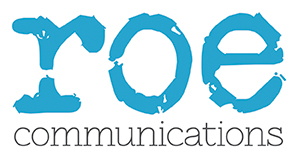Business School Content Generator
Power Up Your Research Content
So, you’ve got a content strategy for research and insight in place
- You’ve launched your new thought-leadership hub or channels
- People are starting to read and share your content
- Faculty feel engaged and want to get involved
- You are feeling positive and motivated to do more
What do you need to do next to maintain momentum?
Emotional connection, relevance, testing
The positive news is that you already have strong foundations to embark on the next stage of content production.
You’ve already:
- Agreed a strategy that explains what you want to achieve and why
- Got clarity on your audiences, what they value and how you can help them with actionable insights
- Put clear metrics in place and a method of reporting against objectives
- Agreed on key themes in order to create differentiation
- Appointed a dedicated project team to drive content production forward
- Created guidelines and a style guide for faculty and engaged them in what you are trying to do
- Started to tap into the wider news and societal agenda to make your content relevant to current events
- Gathered a team of creatives to enable content production into different formats
The truth behind successful research and insight content programmes
This involves:
- Leadership – once you are beyond launch, it can become hard to maintain motivation and interest in your content production, particularly from faculty. Strong leadership by a dedicated editorial team and informed by metrics is key to keeping people on board.
- Focus – it is critical that you continue to focus on building your reputation in certain areas of strength. Deviating from your core messages at this point could create confusion and ambiguity as to what your expertise is.
- Frequency – faculty are extremely busy and creating content is an additional task, particularly if they don’t have a book or research report to promote at the time. The more faculty you can engage in the process, the better, but also find ways of reducing the time that they need to spend on things.
- Variety – keeping your content engaging and sharable requires different formats. Mix up your content formats – and think about creating mini-campaigns or series on chunky topics, with teaser campaigns on social media to create anticipation. Think video, in particular.
- Insight – what’s your key insight in any given piece of content and how can audiences use it in their day-to-day roles?
- Help – how you are going to make it easy for your audiences to action your insights? Can you create useful downloads, checklists or ebooks, or other calls to action such as clicking onto a course programme.
- Topicality – without straying away from your overall purpose, consider your content through the lens of the current news agenda. If you can show how you are addressing people’s current challenges, you stand more chance of them reading and sharing your content.
- Language – research and insights in their purest form are not the easy for a lay audience to read or digest. Make sure that you adopt an editorial style that uses accessible, jargon-free language on a level with your audience’s understanding.
- Humanise your stories – research content can be fairly dry and theoretical. Think about how you can bring this to life by stories including interviews, video, imagery and guest speakers or writers from industry.
- Emotion – great content taps into people’s emotional as well as rational thought processes. When you embark upon a piece of content, think about what you want your audience to think, feel and do as a result
- Test and iterate – content production is a fluid thing and it is essential to continue testing new routes and new avenues. Use good SEO practices to research and understand what your audiences are concerned with and searching for and adjust your content accordingly.
- Promotion – finally, your content won’t fly if you don’t promote it via other channels. Integrating with your social media and email campaigns in particular, is essential.
Business School Content Generator
A 12-month programme, that will:
- Get you results – two pieces of new content published every week on your channels
- Create much deeper engagement with your target audiences
- Create a strong reputation focused on specific areas of research, supporting student recruitment, industry partnerships, sponsorships and funding
- Attract people to your website and increase engagement across social media
- Take the pressure of content generation off your internal team
- Provide results that increase your internal standing with the Dean and faculty.
Sign up to our emails for more insights and advice
View our latest blog posts
Examples of our published content:
Faculty insights
Moving beyond shareholders-come-first thinking: Why boards should have a statement of purpose
Scenario planning: an answer to turmoil?

